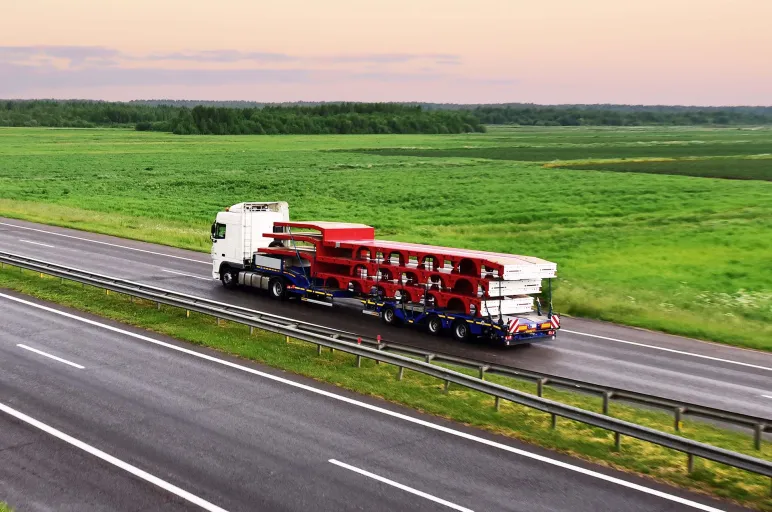
5 Ways AI Can Improve Logistics Operations
- The adoption of AI can prove to be a gamechanger for logistics operators.
- It can make the best use of available data and provide insights to simplify day-to-day operations.
- It can also help design the most efficient vehicle routing and reduce the number of empty miles.
November 25, 2024 | Logistics 3 minutes read
Many logistics companies now leverage technology to streamline operations. They use it to get real-time visibility, automate tasks, design optimal routes and reduce wastage.
However, the recent advancements in artificial intelligence promise to completely transform logistics operations.
So, what is it about AI that makes it especially useful for logistics providers? Where can its adoption make a huge impact? And how should companies prepare to align people, process and technology together?
Let’s begin by looking at a key challenge in this industry.
Reducing Empty Miles is a Pressing Concern
Empty miles, also known as non-revenue miles, account for 20-35% of US trucking miles. This happens when truckers drive empty due to the absence of nearby loads to pick up. As a result, drivers waste time and fuel and pass on extra expenses to shippers and ultimately to consumers.
The problem of empty miles also increases road congestion and carbon emissions, and this makes it a bigger challenge and extends its impact beyond freight.
Over the years, the industry hasn’t made any significant improvement in the number of empty miles. Studies also suggest that the actual number of empty miles may be much higher than estimates suggest.
How AI Can Address Key Challenges in Logistics
Before jumping into specific use cases of AI, logistics managers must understand how different analytic approaches, such as traditional AI, generative AI and operations research, work together, says Chris Caplice, executive director of the MIT Center for Transportation and Logistics.
While traditional AI analyzes data, generative AI uses large language models to understand the context and generate new content. Operations research, on the other hand, uses methods that require human decision-making.
Here are 5 areas in logistics where AI can make huge impact:
1. Data Quality:
Logistics companies work with a huge volume of data on a daily basis. However, a lot of this data often remains unused. Natural Language Processing (NLP) can help make sense of all this data while machine learning can draw connections and create context. As a result, companies can make optimum use of available data as well as use insights to refine day-to-day operations.
2. Vehicle Routing:
Many logistics companies are now using AI and machine learning to determine the most efficient route for delivering goods to multiple locations. Not only does efficient vehicle routing expedite goods delivery and lower costs but it also helps reduce empty miles. Uber Freight, for example, has used vehicle routing to reduce empty miles to between 10% and 15%.
3. Warehouse Automation:
Warehouse operations are more automated than ever, with AI-powered robots capable of sorting, picking and packing inventory to speed up order fulfilment. AI sensors and cameras can track inventory in real time and provide new, real-time data for predictive analytics. Thanks to the integration of AI and robotics, traditional warehouses have emerged as high-tech distribution centers that can expedite fulfilment operations and enhance customer experience.
4. Asset Positioning:
Fluctuations in demand have made it imperative for logistics companies to direct assets to the right locations where demand is expected. By increasing visibility into fleet performance and predictive capacity matching, AI algorithms can help logistics planners strategically position their assets. When demand is less, they can decrease the number of vehicles on the road and nonessential shipment of empty containers.
5. Risk Management:
Logistics operations are prone to natural disasters, geopolitical tensions, labor shortages and unforeseen disruptions. With AI’s predictive capabilities, they can anticipate potential risks and devise contingency plans to mitigate their impact. They can also sense changes in demand, scale operations and adjust inventory whenever needed. Machine learning algorithms can predict supply shortages before they can impact operations, allowing for early intervention.
The Road Ahead
Logistics carriers must embrace advanced AI tools to optimize data usage, make sound decisions, operate efficiently and proactively manage risks. As AI continues to quickly evolve, logistics professionals can look forward to getting many tools and capabilities to simplify operations and deliver more value.



